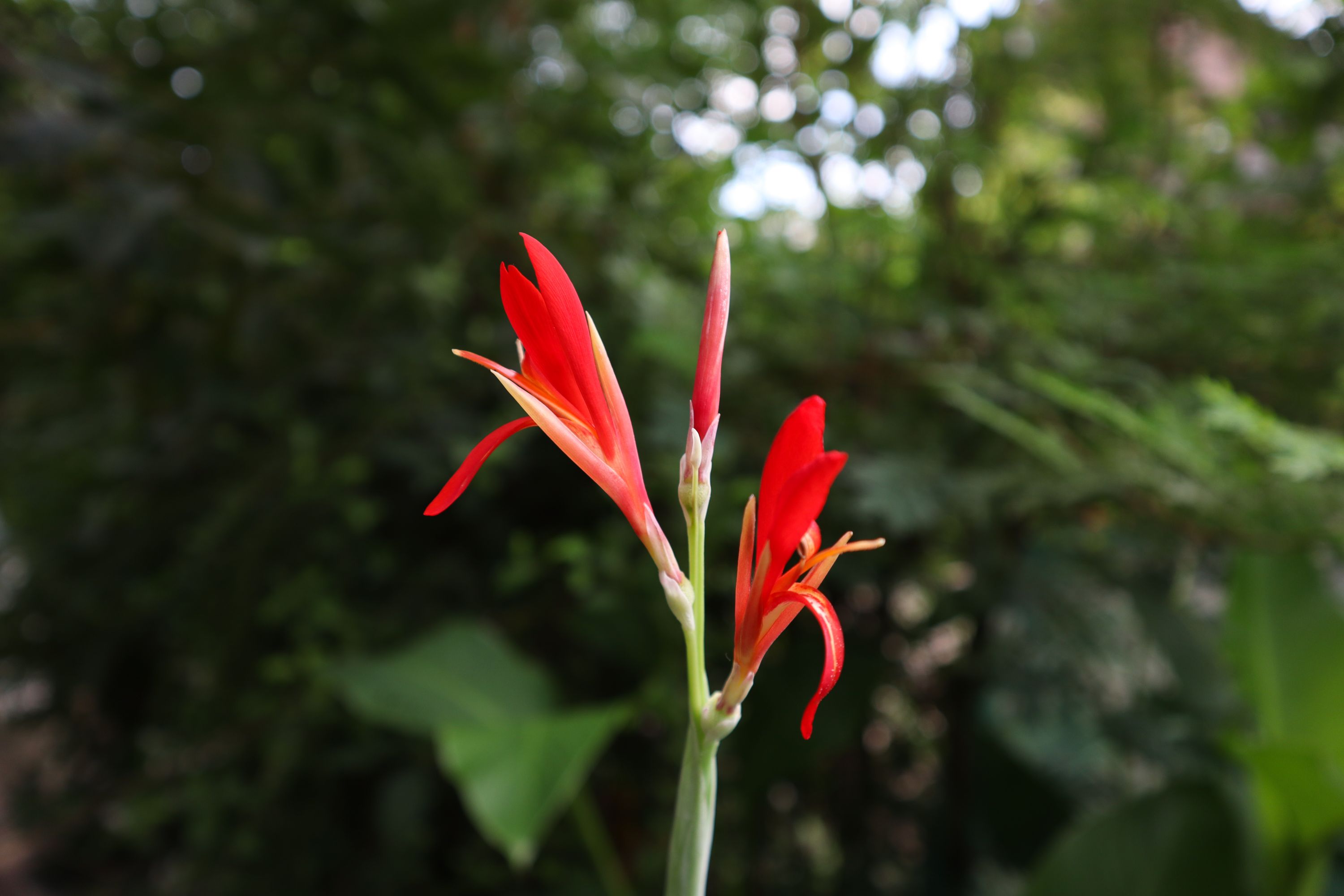Canna paniculata
(Canna paniculata)

Description
Canna or canna lily is the only genus of flowering plants in the family Cannaceae, consisting of 10 species. Cannas are not true lilies, but have been assigned by the APG II system of 2003 to the order Zingiberales in the monocot clade Commelinids, together with their closest relatives, the gingers, spiral gingers, bananas, arrowroots, heliconias, and birds of paradise. Although plants of the tropics, most cultivars have been developed in temperate climates and are easy to grow in most countries of the world, as long as they receive at least 6–8 hours average sunlight during the summer, and are moved to a warm location for the winter. See the Canna cultivar gallery for photographs of Canna cultivars. The plants are large tropical and subtropical herbaceous perennials with a rhizomatous rootstock. The broad, flat, alternate leaves that are such a feature of these plants, grow out of a stem in a long, narrow roll and then unfurl. The leaves are typically solid green, but some cultivars have glaucose, brownish, maroon, or even variegated leaves. The flowers are asymmetric and composed of three sepals and three petals that are small, inconspicuous, and hidden under extravagant stamens. What appear to be petals are the highly modified stamens or staminodes. The staminodes number (1–) 3 (–4) (with at least one staminodal member called the labellum, always being present. A specialized staminode, the stamen, bears pollen from a half-anther. A somewhat narrower "petal" is the pistil, which is connected down to a three-chambered ovary. The flowers are typically red, orange, or yellow, or any combination of those colours, and are aggregated in inflorescences that are spikes or panicles (thyrses). Although gardeners enjoy these odd flowers, nature really intended them to attract pollinators collecting nectar and pollen, such as bees, hummingbirds, sunbirds, and bats. The pollination mechanism is conspicuously specialized. Pollen is shed on the style while still in the bud, and in the species and early hybrids, some is also found on the stigma because of the high position of the anther, which means that they are self-pollinating. Later cultivars have a lower anther, and rely on pollinators alighting on the labellum and touching first the terminal stigma, and then the pollen.
Taxonomic tree:







